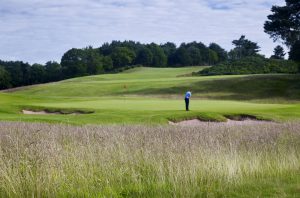Germinal launches seed mixture to speed up pace of play
Related Articles
Germinal has added a new seed mixture to its Grade A range of sports seed products with the launch of a new semi-rough mixture for golf courses. Designed specifically for use along the border between fairway and rough areas, A32 Ecological Rough is made up of five different grass species, all of which have been selected to produce a thin, easy to manage grass sward with added ecological benefits.
A32 Ecological Rough has been designed specifically to enable greenkeepers to create fairway margins which adhere to The R&A’s guidelines regarding pace and play.

Comprising 60 per cent Corail (strong creeping red fescue), 15 per cent sweet vernal grass, 15 per cent Teno (small leaved Timothy), five per cent AberRoyal (browntop bentgrass), and five per cent crested dogstail, A32 produces a sward with very thin growth habits with wispy seed heads that don’t usually exceed 30 to 60cm in height. These species also offer an attractive and diverse display of foliage throughout the summer, and create a valuable habitat for many species of native wildlife.
“A32 provides the perfect buffer between fairways and more off-line areas of play,” explains Richard Brown, Germinal’s amenity sales manager. “It creates an easy to manage sward which can be maintained via infrequent cutting to create a thin, semi-rough environment that enables rapid ball retrieval and onward play. It also creates an ecologically valuable, natural grassland habitat, acting as an extension to wildlife-rich areas of thicker rough.”
Sophie Vukelic, ecology and environment consultant at the STRI, explains the ecological value of creating enhanced semi-rough environments: “Grasses are vitally important from an ecological viewpoint,” she describes. “They are the principle components of all grassland habitats, with different species providing unique diversity within machair to the north and chalk downlands in the south. These habitats provide food, shelter and vantage for a range of wildlife communities and are particularly valuable for molluscs through to invertebrates, bryophytes and small mammals. Often unappreciated are the secondary benefits of grasslands, which, by their presence, provide important food resources for bats and birds.”

























